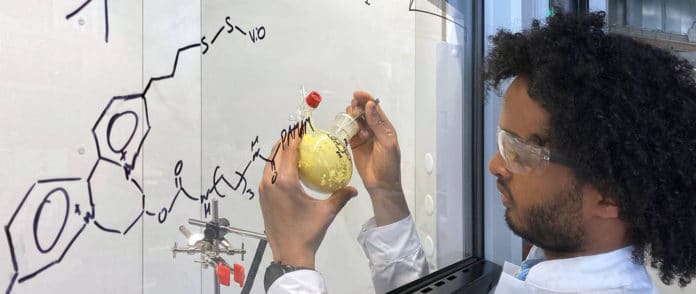To produce hydrogen from electricity and to generate electricity from hydrogen, a rare and thus expensive precious metal platinum as a catalyst is used.
An international research team with significant participation of scientists from the Technical University of Munich (TUM) has presented a new system: Enzymes. Also referred to as hydrogenases, these enzymes can efficiently produce hydrogen using electricity and generate electricity from hydrogen.
Nicolas Plumeré, Professor for Electrobiotechnology at the TUM Campus Straubing for Biotechnology and Sustainability, said, “When the sensitive hydrogenases are embedded in suitable polymers, they continue to work for several weeks, even in the presence of oxygen. Without this protection, they lose their activity within a matter of minutes.”
The enzymes are embedded in a protective polymer to make the enzymes viable for use in technical hydrogen conversion.
Embedding the hydrogenases in polymers whose side chains can move electrons, alluded to as redox polymers, had, however, two decisive disadvantages: an undeniable degree of resistance countervailed the flow of electrons through the redox polymer. This necessary the speculation of energy which was lost as warmth. Furthermore, the embedded hydrogenases lost their ability to produce hydrogen.
Using the suitable polymer side chains, scientists were able to set the polymer’s redox potential so that only a small overvoltage is necessary to overcome the resistance.
Further observations revealed that the potential of the side chains had shifted slightly to positive values due to the embedding in the polymer matrix. Next, they used a side chain with a corresponding negative potential. Doing so made hydrogenase capable of catalyzing the reaction in both directions without energy loss.
Scientists used the system to develop a fuel cell in which oxygen is reduced by the enzyme bilirubin oxidase from the bacterium Myrothecium verrucaria. At the same time, the hydrogenase embedded in the polymer film oxidizes the hydrogen from the bacterium desulfovibrio desulfuricans, generating electricity in the process.
The cell achieved a value with an open-circuit voltage of 1.16 V, the highest ever measured for a system of this type and close to the thermodynamic maximum. With three milliamperes per square centimeter, the cell achieved a very high power density for biological cells simultaneously.
Nicolas Plumeré said, “The reduction in energy loss has two decisive advantages. First, it makes the system significantly more efficient; second, the heat generated in a fuel cell stack at high-performance levels would pose a problem for biological systems.”
Journal Reference:
- Hardt, S., Stapf, S., Filmon, D.T. et al. Reversible H2 oxidation and evolution by hydrogenase embedded in a redox polymer film. Nat Catal 4, 251–258 (2021). DOI: 10.1038/s41929-021-00586-1
